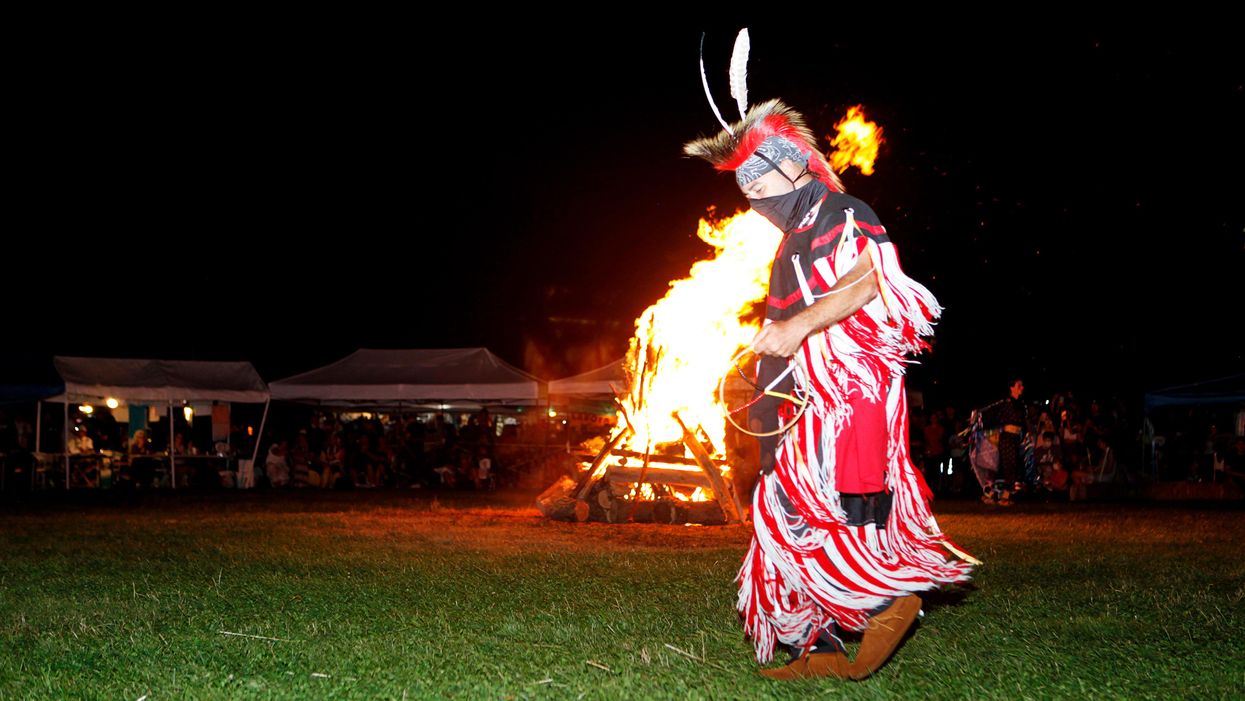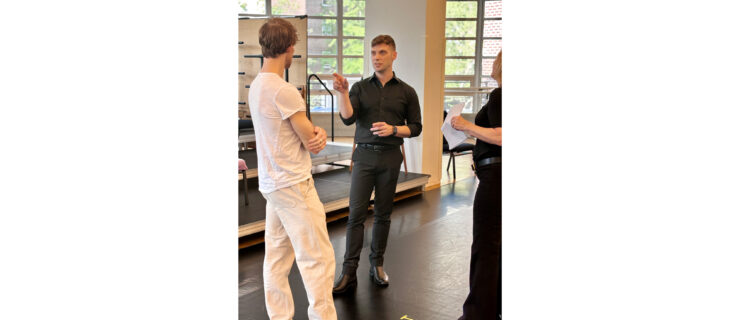Capturing Some of America’s Original Dances: Inside the Thunderbird American Indian Dancers’ Powwow
Over the course of three days in July, the Thunderbird American Indian Dancers hosted its 42nd annual powwow at Queens County Farm Museum. Founded in 1963 by members of the Mohawk, Hopi, Winnebago and Kuna (San Blas) tribes, Thunderbird is the oldest resident Native American dance company in New York, and puts on the city’s largest powwow, drawing dancers from more than 40 tribal nations for a series of performances and dance contests, as well as crafts and food stands.
Dance Magazine joined Saturday night’s sunset bonfire to capture some of the competitions, and asked Thunderbird director Louis Mofsie and company dancer Michael Taylor to share their insights on the place of dance within the powwow.

The powwow is a social gathering where we get together to dance and sing, to meet old friends and make new ones. Originally a Western/Great Plains tradition, it does not have any religious or ceremonial significance—our religious and ceremonial dances and songs are restricted and closed to outsiders.
Dancing is the major activity. Over the weekend, there are dance competitions and also what are called intertribal dances, where the dancers from all tribes are invited to participate. Our bonfire each evening during the gathering is there to help us travel back in time to the days when we had no spotlights. It reminds us of our past, our connection to our heritage and how it has survived through all our hardships to this day.
As Native American people, we start dancing at a very young age. Dancing at powwows is how we learn the different styles of dances and what they represent. It helps us to connect to our roots and reinforces our awareness of who we are. It also reminds us that Native American dance is the original dance in America—and is still alive today. —Louis Mofsie and Michael Taylor
 Women’s fancy shawl dance Linda Dutan
Women’s fancy shawl dance Linda DutanPopular Powwow Dances
At most powwows, the most popular dance competitions are the Women’s Fancy Shawl Dance, Men’s Fancy Dance, Women’s Jingle Dress Dance and the Men’s Grass Dance. There are other categories, but these usually have the most participants.
WOMEN’S FANCY SHAWL DANCE: This dance dates back to around 1945, right after the Second World War. Native American women and men had volunteered for the armed services and traveled all over the world. During their travels they observed how the women in many different countries were dancing. When they returned home, they decided to introduce a different style of dancing. Traditionally, the women did a very slow, graceful movement around the outer edge of the dance circle, and the men would be doing more vigorous movement on the inside. The Fancy Shawl Dance is much faster in rhythm, more vigorous and permits them to dance on the inside of the circle. The women wear shawls with very long fringe along the edges, and as they move, the fringe reminds you of the feathers that the men wear. Although the women do not wear the feathers and bells on their legs like the men do, their footwork and movements are very similar.
MEN’S FANCY DANCE: They say this dance also originated around the end of the Second World War. When the men returned home from the war, they also wanted a more vigorous style of movement. Fancy dancing is much faster than traditional men’s dancing. Each of the dancers tries to create as many fancy steps as they can while keeping time with the singing and drumming. The men wear feathers with ribbons attached to each end, and they carry dance wands that are decorated with ribbons and feathers.
 An old-style traditional men’s dance Linda Dutan
An old-style traditional men’s dance Linda DutanWOMEN’S JINGLE DRESS DANCE: This dance tells the story of its origin. There was a mother who had a very ill daughter. One night she had a dream, and in it she had a vision: She was told to show the women how to make a special dress with little cones or jingles on it, show them how to do a special kind of dance and sing them a very special song. If she did all these things, it would help her daughter get well. The next morning the mother showed the women how to make the dress, showed them a special dance and sang a very special song for them. Sure enough, her daughter got well. The dance started out as a healing dance but has come down to us as one of the more popular competition dances at the powwow gatherings.
MEN’S GRASS DANCE: One origin story says this dance goes back to precolonial times, when the people out on the Great Plains depended on the buffalo for food, shelter and fuel to heat their teepees. Because the buffalo herds moved across the plains frequently, the people moved from campsite to campsite, often following the herds. Before they moved into a new site, a group of dancers was sent out into the camping area to dance. As they danced, they were using their feet to crush down the tall grass to create a smooth, flat area for the people to set up their teepees. The movement of the dancers’ feet represents the crushing down of the tall grass. The long fringe the men wear on their regalia reminds you of the tall grass blowing in the wind as they sway back and forth. —Louis Mofsie and Michael Taylor




